When it comes to the Everest Base Camp Trek, people often find themselves torn between the allure of adventure and the challenge it presents. This 15-day journey isn’t just about reaching a destination; it’s about soaking in breathtaking views and navigating vibrant Sherpa villages along the way. With a mountain flight to Lukla kicking things off, trekkers quickly realize there’s more to this trek than meets the eye. But what really sets this experience apart, and what should one consider before lacing up those hiking boots?
Key Points
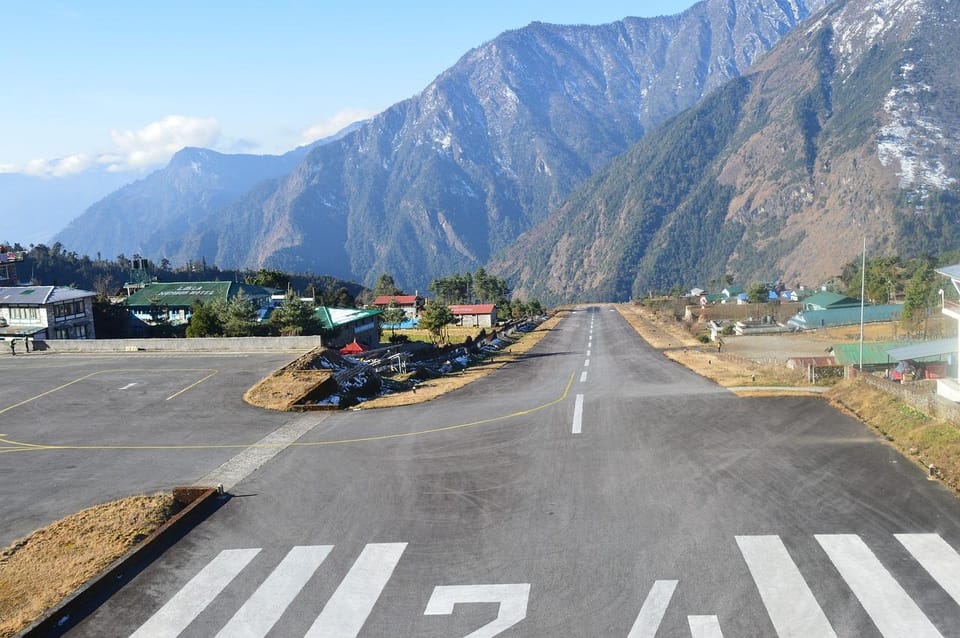
- The Everest Base Camp Trek lasts 15 days, offering an immersive experience through stunning landscapes and local villages.
- The trek starts with an exhilarating mountain flight to Lukla, setting the stage for the adventure ahead.
- Participants enjoy breathtaking sunrise views from Kalapatthar, one of the trek’s major highlights.
- The journey includes airport transfers, accommodations, meals, and support staff for a comfortable experience.
- Ideal trekking months are March to May and September to November, ensuring favorable weather conditions.
It's also worth checking out some other tours and experiences nearby.
Overview of the Trek
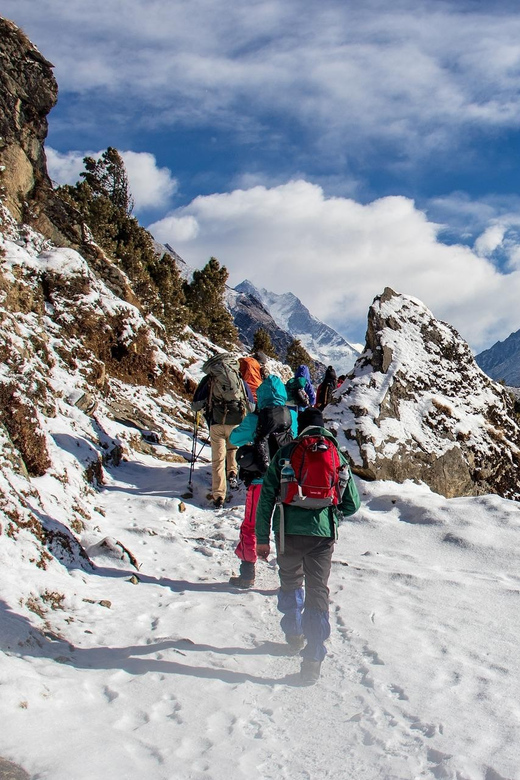
The Everest Base Camp Trek is an unforgettable adventure that takes trekkers through stunning landscapes and vibrant villages over 15 days, offering a chance to witness the majesty of the world’s highest peaks.
Starting at an affordable price of €1,563.99 per person, it’s a fantastic deal for anyone looking to explore the Himalayas.
With a group size limited to 16, participants get a more personalized experience. Plus, the trek includes a live English-speaking guide, ensuring everyone stays informed and engaged.
Travelers can book with peace of mind, thanks to the free cancellation policy—just cancel up to 24 hours in advance for a full refund.
With airport transfers and accommodation sorted, it’s all about enjoying the journey ahead.
Trekking Experience Highlights
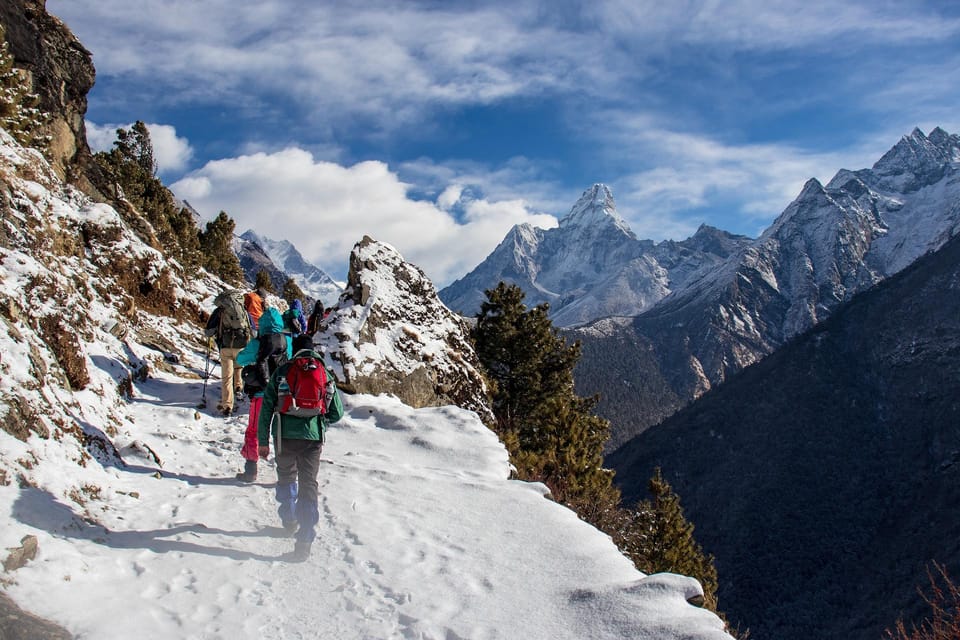
Trekking through the Everest region consistently offers breathtaking views and unforgettable experiences that leave a lasting impression on adventurers. Each step reveals stunning vistas of towering peaks and charming villages, making every moment feel special.
The trek kicks off with an exhilarating mountain flight to Lukla, setting the stage for the journey ahead. Reaching Everest Base Camp is a major highlight, where trekkers can soak in the spirit of the world’s highest mountain.
Don’t miss a sunrise at Kalapatthar; the panoramic views will take your breath away. Along the way, trekkers bond over shared challenges, creating memories that last a lifetime.
Ultimately, this trek isn’t just a hike; it’s a transformative adventure that enriches souls.
Included Amenities
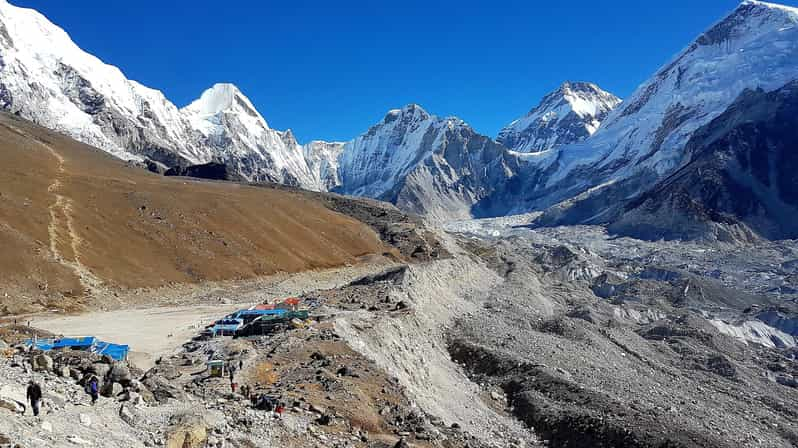
Trekkers can look forward to a range of included amenities that make the Everest Base Camp experience comfortable and enjoyable. These thoughtful touches ensure a smooth journey through the breathtaking Himalayas. Here’s what’s included:
-
Airport pick-up and drop-off for easy travel logistics.
-
Hotel accommodation in Kathmandu for a cozy start.
-
Teahouse stays in the mountains, blending comfort with local charm.
-
Meals provided, with breakfast in Kathmandu and three meals daily while trekking.
-
Experienced trekking guide and porters to lend a hand and share insights.
With these amenities, trekkers can focus on the adventure ahead, knowing they’ve got the essentials covered.
It’s all about making the trek as memorable and stress-free as possible!
Excluded Costs
When planning the Everest Base Camp trek, it’s important to keep in mind the excluded costs that can add up along the way.
First off, travelers need to cover their international flight tickets and travel insurance, which are essential for any trip.
Meals in Kathmandu, like lunch and dinner, aren’t included either, so it’s wise to budget for those tasty local eats.
Also, any drinks—whether water or something more spirited—aren’t factored into the package.
Unforeseen situations can pop up, leading to unexpected expenses, so having a little extra cash is smart.
Lastly, tipping your guides and porters is a nice gesture, but it’s not included in the trek costs, so plan for that too!
Booking Process
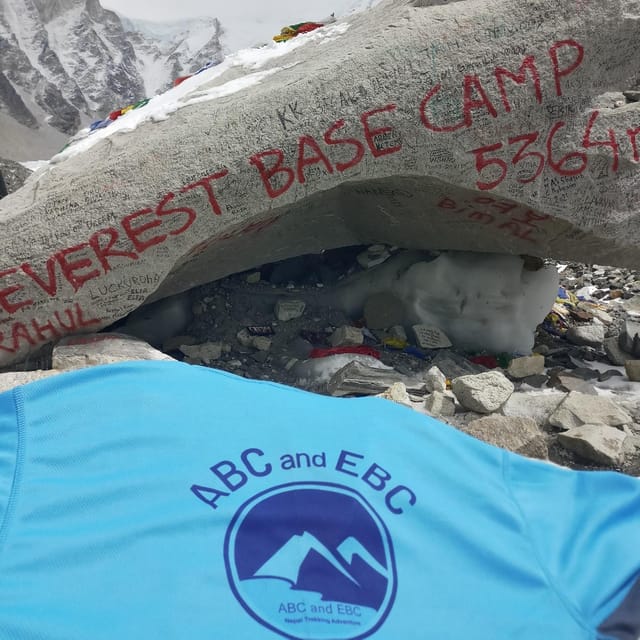
Understanding the excluded costs helps travelers better prepare for the booking process, which is straightforward and user-friendly.
Here’s how to get started:
-
Reserve now & pay later: Flexibility is key, so lock in your spot without immediate payment.
-
Check availability: See what dates and group sizes work for you.
-
Contact the operator: Got questions? Reach out for quick answers.
-
Confirm inclusions: Make sure you understand what’s covered in your package.
-
Be mindful of exclusions: Remember what you’ll need to cover on your own.
With these steps in mind, booking the Everest Base Camp Trek can be a breeze!
Just follow the simple process, and you’ll be well on your way to an unforgettable adventure.
Packing Essentials
Packing the right gear is crucial for a smooth and enjoyable Everest Base Camp Trek experience. This trek demands essentials that keep trekkers comfy and ready for anything Mother Nature throws their way. Here’s a handy packing list to guide everyone:
| Essential Item | Description | Why It’s Important |
|---|---|---|
| Waterproof Jacket | Lightweight, packable | Keeps you dry during rain |
| Trekking Boots | Sturdy, broken-in | Prevents blisters, provides support |
| Sleeping Bag | Rated for cold temperatures | Ensures warmth at night |
| First Aid Kit | Basic supplies | Addresses minor injuries |
| Water Bottle | Insulated, durable | Keeps hydration handy |
With the right gear, trekkers can focus on enjoying the stunning landscapes and creating unforgettable memories.
Safety Considerations
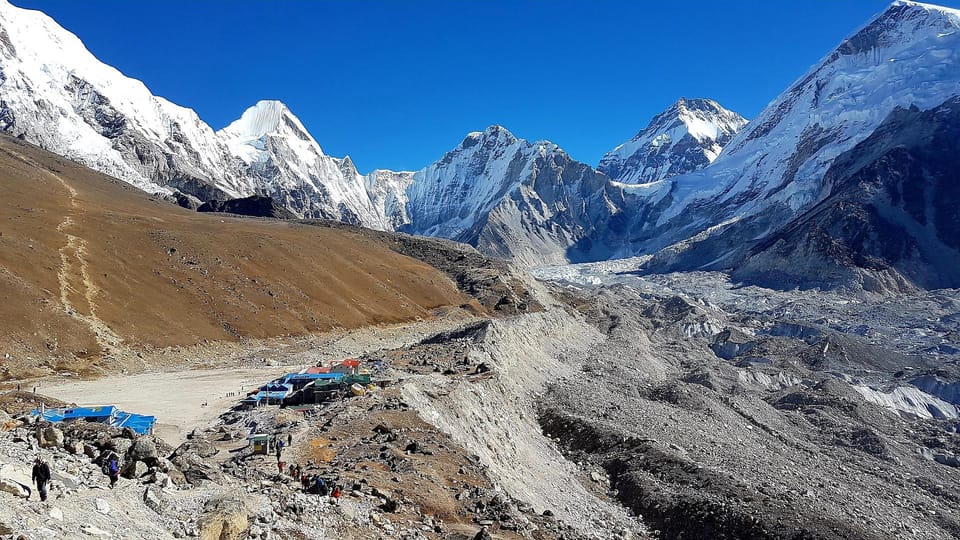
Trekking to Everest Base Camp comes with its own set of safety challenges, so it’s essential for trekkers to stay aware and prepared at all times.
Here are some key safety considerations to keep in mind:
-
Acclimatization: Give your body time to adjust to the altitude to prevent altitude sickness.
-
Stay Hydrated: Drink plenty of water, especially at higher altitudes.
-
Listen to Your Body: If something feels off, don’t push through; it’s better to turn back.
-
Guide Assistance: Rely on experienced guides to navigate tricky terrain and handle emergencies.
-
Insurance: Get comprehensive travel insurance that covers high-altitude trekking.
Best Time to Trek
Knowing when to hit the trails can make all the difference in experiencing the breathtaking beauty of the Everest region.
The best time to trek is during the pre-monsoon months of March to May and the post-monsoon months of September to November. During these periods, trekkers enjoy clear skies, mild temperatures, and stunning views.
The spring season brings vibrant flowers, while autumn offers crisp air and fewer crowds.
Trekking in the winter, though possible, can be challenging due to heavy snowfall and freezing temperatures, making trails less accessible.
Summer months are often rainy, leading to slippery paths.
Here's a few more nearby tours and experiences we think you'll like.
Frequently Asked Questions
What Is the Physical Fitness Requirement for the Trek?
For the trek, participants need a decent level of fitness. They should be comfortable with long hikes, some elevation gain, and walking for several hours daily. Regular training’s a smart way to prepare!
Are There Age Restrictions for Participants?
There aren’t strict age restrictions for participants, but most companies recommend being at least 12 years old. It’s best if younger trekkers are accompanied by an adult, ensuring a safe and enjoyable experience.
Can I Bring My Own Trekking Gear?
Sure, they can bring their own trekking gear! It’s often more comfortable and familiar. Just make sure it’s suitable for the conditions. A good fit can make all the difference on the trails!
Is Wi-Fi Available During the Trek?
They’ve got limited Wi-Fi access during the trek, mostly in villages. It’s not super reliable, so they shouldn’t count on it for streaming or heavy use. Better to enjoy the surroundings instead!
What Happens in Case of Altitude Sickness?
If someone experiences altitude sickness, they’ll usually need to descend to a lower elevation. It’s crucial they listen to their body, rest, and stay hydrated. Guides are trained to handle these situations and provide support.
Not for you? Here's more of our most recent tour reviews happening neaby
- Manaslu Tsum Valley Trek
- Tilicho Lake Trek (Annapurna Region Trek)
- Nepal: Ganesh Himal Trek via Sing La Pass (4,045m)
- Mt.Yubra Himal Peak Climbing
- Katmandu: 14-Day Annapurna Circuit Trek via Thorang La Pass
- Everest Base Camp Helicopter Tour With Landing
- Everest Base Camp Trek: Foot of the Worlds Tallest Mountain
- Manaslu Trekking
- Everest Base Camp Helicopter Tour With Landing
- From Kathmandu: 14 Days Langtang & Gosainkunda Trek
- From Kathmandu : 16 Days Langtang Valley & Gosainkunda Trek
- From Kathmandu: 14 Days Langtang & Gosainkunda Trek
- Nepal: Tamang Heritage Trail Trek – 7 Days Trek
- Everest Base Camp Sharing Helicopter Tour
- Mohare Danda Trek With Children
Recap
In a nutshell, the Everest Base Camp Trek is an adventure of a lifetime, blending stunning views with rich culture.
From the exhilarating flight to Lukla to the awe-inspiring sunrise at Kalapatthar, every moment is unforgettable.
With the right packing and safety precautions, trekkers can fully enjoy this epic journey.
So, if you’re ready for an incredible experience in the Himalayas, grab your gear and get set for an adventure that’ll leave you with stories to tell for years!
